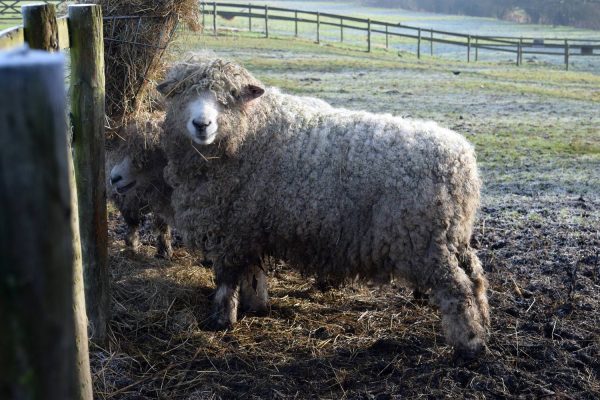Each week, we ask you to share your questions about farming, food or Sacrewell with us on Facebook. The person who writes the best question wins a free tractor ride for a child and accompanying adult, as well as having their question answered on our website. This question came from Frances Stapleton, the niece of Dr Francis William Dry.
To start this story, we need to understand static electricity. It’s the stuff that makes your hair stick if you rub it against a balloon, or the stuff that gives you a tingling shock when you touch a door handle sometimes. Static electricity is created when electrons jump from one material to another when you bring them into contact with each other, for example when you rub them together. The build up of extra electrons in a material creates an electric charge and some can carry more of a charge than others.
Computers don’t like static electricity because they are busy using their own electric charges to do things like make these words appear on your screen. So when they became popular in the 1970s, the search was on to find something to cover the floor with that wouldn’t create too much of a static charge.
Enter the Drysdale sheep. This sheep originated in New Zealand in 1931, when Dr Francis William Dry crossed Romney sheep and Cheviot sheep to produce a breed which had a high percentage of hairy fibres in its fleece. At the time there was little use for this especially ‘hairy’ wool, Dr Dry was only breeding them for research. However in the 1970s Drysdale wool became very popular for producing carpets as the high percentage of hair meant that these carpets produced less static electricity.
Sheep can be reared on a farm for two different reasons; for meat production or for wool production. The Drysdale sheep is a wool breed, which we don’t have at Sacrewell. The four breeds of sheep that we do have at Sacrewell are:
Lincoln Longwool: This rare breed is a dual purpose sheep. It grows large, which is good for meat production, but is better known for its long, lustrous wool.
Jacob Sheep: Another dual purpose sheep. The wool of a Jacob is popular for making clothing because each fleece has a different pattern of black and white.
Suffolk Texel Cross: This breed is reared for meat production and you will often see them in large flocks on commercial farms.
Soay Sheep: Although they are small, these sheep are hardy and tough as they are a very ancient breed. They are reared for their meat, which has a gamey flavour that is different to other sheep breeds.

References
http://www.explainthatstuff.com/how-static-electricity-works.html